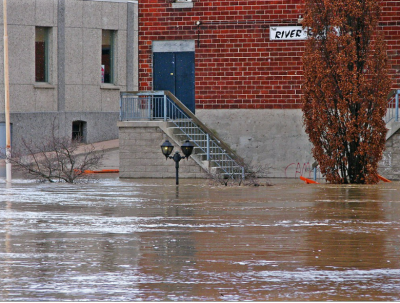Flood Hazard Model Calibration Using Multiresolution Model Output
The goal of model calibration is to adjust the values of the uncertain model inputs or parameters to produce model outputs or projections that are most compatible with observations. Calibration requires model runs at many different parameter settings. Obtaining model runs is more computationally expensive at higher spatial resolutions. Due to computational constraints, there may not be enough high-resolution model runs to perform calibration for all parameters. We develop a calibration approach that assimilates information from computationally cheaper lower spatial resolution model runs to deal with such scenarios. Our approach can improve inference for model parameters with unchanging interpretation across resolutions that require a large number of model runs for calibration.
We find that our multiresolution model calibration approach can improve inference for less sensitive model parameters with consistent meaning across resolutions. However, we find that our approach offers little over traditional single-resolution calibration approaches for inferring more sensitive parameters that may have less consistent meaning across resolutions. We also find that calibration with our approach yields projections that more accurately depict which locations are flooded compared to the single-resolution approach. Our work is the first that we know of to calibrate a physical model using multiple resolutions of model output. There are many variables to consider that can influence the outcome of model calibration using different approaches, and our approach merely scratches the surface of the problem. Our study opens the door to discovering in which situations a multiresolution model calibration approach may be preferable.
Riverine floods pose a considerable risk to many communities. Improving flood hazard projections has the potential to inform the design and implementation of flood risk management strategies. Current flood hazard projections are uncertain, especially due to uncertain model parameters. Calibration methods use observations to quantify model parameter uncertainty. With limited computational resources, researchers typically calibrate models using either relatively few expensive model runs at high spatial resolutions or many cheaper runs at lower spatial resolutions. This leads to an open question: Is it possible to effectively combine information from the high and low-resolution model runs? We propose a Bayesian emulation-calibration approach that assimilates model outputs and observations at multiple resolutions. As a case study for a riverine community in Pennsylvania, we demonstrate our approach using the LISFLOOD-FP flood hazard model. The multiresolution approach results in improved parameter inference over the single-resolution approach in multiple scenarios. Results vary based on the parameter values, and the number of available model runs. Our method is general and can be used to calibrate other high-dimensional computer models to improve projections.

